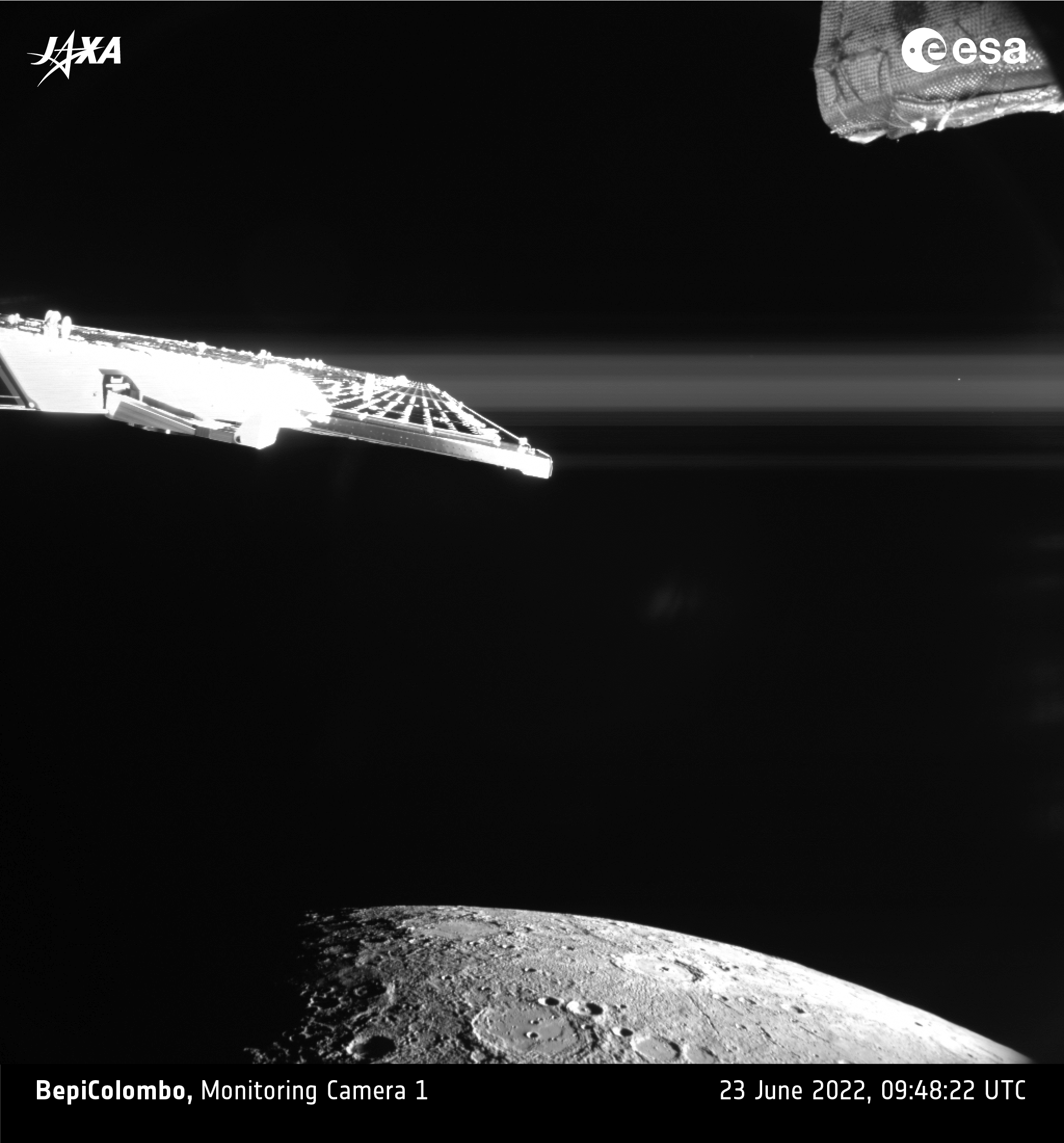A spacecraft’s second close flyby of Mercury Thursday (June 23) gave a stunning set of close-ups of the planet’s craters and volcanic regions.
The BepiColombo mission, a joint project by the European Space Agency (ESA) and the Japan Aerospace Exploration Agency (JAXA), got within only 125 miles (200 kilometers) from Mercury’s crater-strewn surface.
While the closest view was of the planet’s nightside, scientists said the mission still provided valuable insight of Mercury’s formation processes when regions within daylight came into view.
Related: Mercury looks stunning in this 1st flyby photo from Europe and Japan’s BepiColombo mission
“I punched the air when the first images came down, and I only got more and more excited after that,” Jack Wright, who helped plan the imaging sequence as a member of spacecraft’s monitoring camera team, said in an ESA statement (opens in new tab).
“The images show beautiful details of Mercury, including one of my favorite craters, Heaney, for which I suggested the name a few years ago,” Wright added. (Heaney is among the craters in the image annotated below.)
Heaney is embedded in a set of smooth volcanic plains and may be located nearby an ancient volcano, which BepiColombo plans to examine more closely when it finally settles into an orbit in 2025.
Minutes later, the spacecraft spotted the largest impact feature on the planet, called Caloris basin. The 970-mile (1550-km) feature includes hardened lavas on the floor.
“The volcanic lavas in and around Caloris are thought to post-date the formation of the basin itself by a hundred million years or so, and measuring and understanding the compositional differences between these is an important goal for BepiColombo,” ESA officials stated in the same press release.
The two orbiters of BepiColombo are stacked on top of each other through the spacecraft’s various planetary flybys in the coming years. In this configuration, ESA noted, only a selection of instruments are available to perform science.
That said, the mission was still able to examine magnetic, plasma and particle aspects of Mercury in regions that will not be visible from BepiColombo’s eventual orbit.

The spacecraft still has four more Mercury flybys planned, with the next one happening about one year from now. Next month, BepiColombo will make its closest approach to the sun of the mission.
Mercury is a tough planet to reach, because the sun’s gravity accelerates any spacecraft in that region. BepiColombo is performing the flybys to remove energy and speed from its trajectory to safely conclude its work in orbit.
Follow Elizabeth Howell on Twitter @howellspace (opens in new tab). Follow us on Twitter @Spacedotcom (opens in new tab) and on Facebook (opens in new tab).

